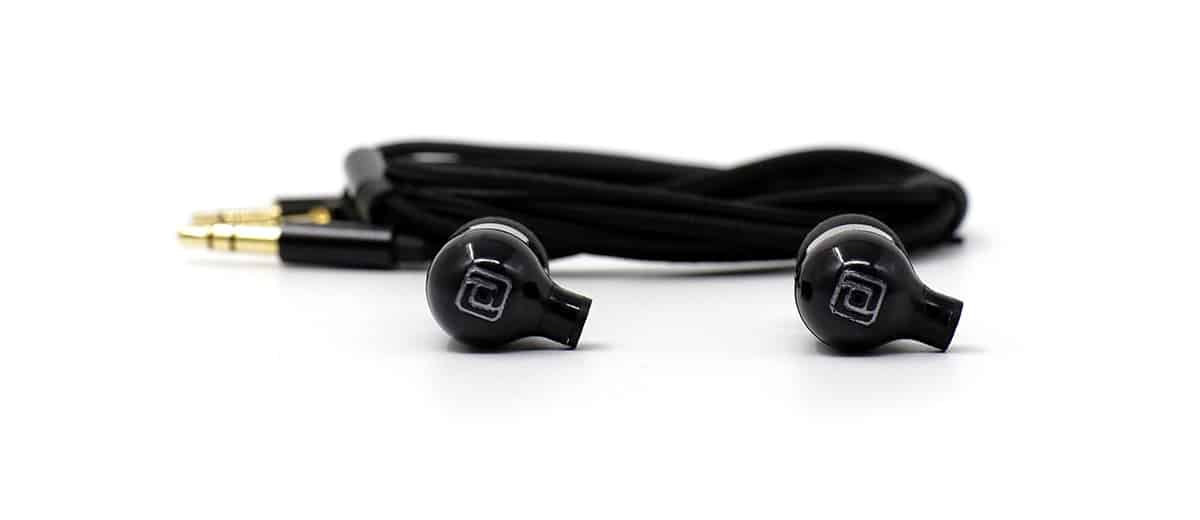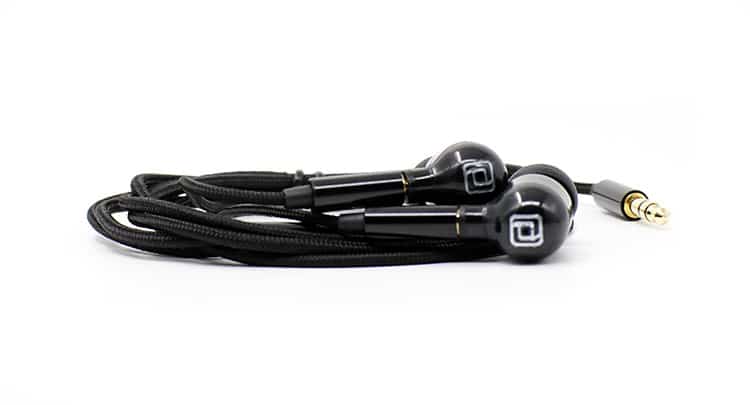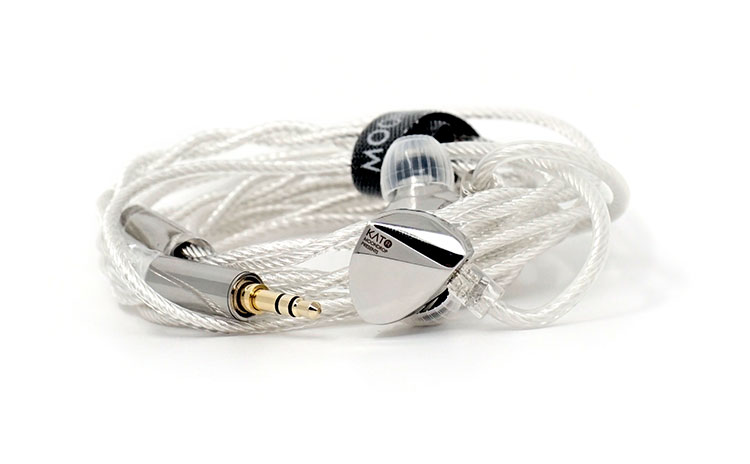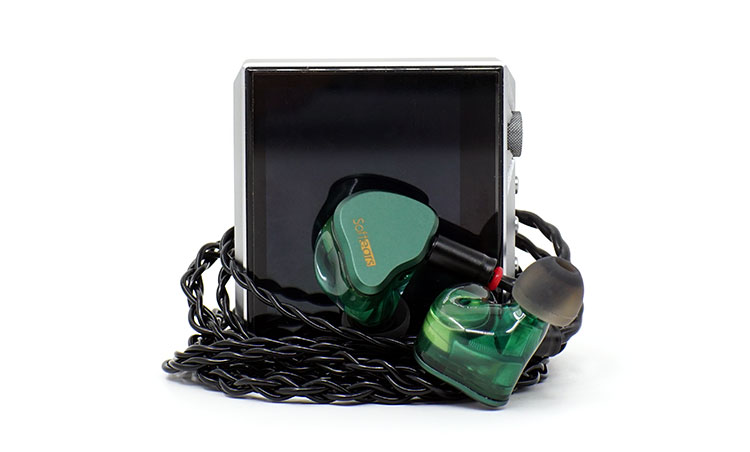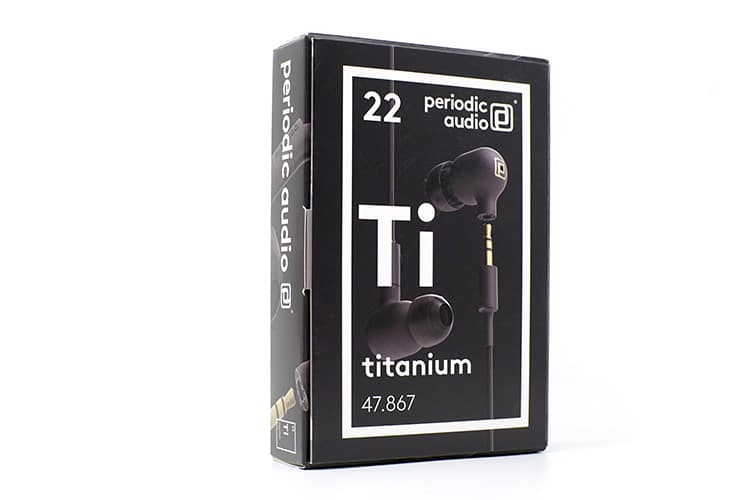Select Comparisons
Periodic Audio Magnesium V3
$199
Technical
The Periodic Audio Magnesium V3 and Titanium V3 both have a single dynamic driver. The difference is the material of their diaphragm. The Magnesium V3 has a magnesium diaphragm material while the Titanium V3 has a titanium diaphragm material.
Design
In terms of design, these 2 monitors are identical to each other, including the silver-colored emblem found on the shell. Both have the same shell material and shell design – a black bullet-type IEM. Same with the Magnesium V3, the Titanium V3 has a 2.5mm termination with a 3.5mm straight plug termination.
Performance
Despite being identical in appearance, these 2 IEMs are very different in their internals, which results in very different performances.
Both being a 1 DD IEM, there is no doubt that both have good sub-bass quantity, which is bass head worthy. However, the Titanium V3 has a better bass presentation with good sub-bass to mid-bass ratio.
With the Mg V3, there are times that the mid-bass is overpowered by the sub-bass wherein rumbles get in the way of mid-bass details. Notes became muddy, in exchange for a deep thump. Titanium V3 has a good balance between the two, making the mid-bass have a presence of its own.
The Titanium V3 has a deeper drop in the midrange region, which can be described as a typical V-shaped IEM. In comparison, the Mg V3 has a more elevated midrange.
This makes the vocals to be more forward and fuller than the Titanium. Despite the Titanium V3 being further back, Titanium V3 is superior in terms of clarity, such that more details are picked up, compared to the Magnesium V3.
The Titanium V3 is also brighter than the Magnesium V3. The Magnesium V3 is not much of a treble energetic monitor, to begin with, and has more engaging highs, with a fuller presentation. Both monitors steer away from harsh trebles, making both not prone to treble fatigue.
Both monitors don’t have expansive staging and imaging. The soundstage of both monitors is very similarly average, with the Titanium V3 just having more height than the Magnesium V3. Imaging is also very similar, just average. Sound is not as multidimensional as I would like them to be.
Moondrop KATO
$189.99
Technical
The Moondrop KATO has a single dynamic driver configuration with a 3rd generation diamond-like carbon (DLC) composite diaphragm. The Periodic Audio Titanium V3 has a similar single dynamic driver configuration, but with a titanium diaphragm material.
Design
The KATO has a polished silver metal shell with an irregular geometric-shaped shell. The Titanium V3 looks completely different from its old-school bullet-type design made in plastic.
As for the cables, the KATO has a 2-pin 0.78mm termination with a 3.5mm straight plug termination while the Titanium V3 has a 2.5mm termination with a 3.5mm straight plug termination.
Performance
The Titanium V3’s bass has a deeper and stronger presence than the KATO. Its sub-bass also has a deeper and fuller rumble, unlike the KATO.
The Titanium V3 also has better control and articulation, with a fast attack and decay. The difference between the two in terms of bass response is night and day. If you’re big on the bass, the Titanium V3 is a clear choice between the two.
Both monitors have a noticeable dip in the Midrange region, with the Titanium having a steeper dip. Because of Titanium V3’s heavy bass, vocals sound further away than the KATO.
Surprisingly, Titanium’s midrange is not at all muddy, even at par with KATO’s level of detail. Both monitors perform well such that despite being recessed, there are still a lot of details picked up every now and then.
The upper-frequency tuning of both IEMs is quite similar. Both have a good treble extension, although KATO’s treble is more engaging and more aggressive than the Titanium V3. Although the Titanium already has clean and crisp highs, the KATO exceeds Titanium’s level with an airy top and just does it better.
In terms of soundstage, it is noticeable that the KATO is wider and has more heights. Although, the Titanium V3 does have more depth. Out of the two, the Titanium V3 has a more intimate soundstage.
Imaging on the KATO is also more accurate. The detail on the spatial separations between the different elements is more 3-dimensional compared to the Titanium V3.
Softears Volume
$299
Technical
The Softears Volume is a tri-brid monitor with its own 10mm PEEK suspension diaphragm coil with a beryllium-plated dome dynamic driver and 2 custom BA while the Periodic Audio Titanium V3 is a single DD with its single Titanium Diaphragm dynamic driver.
Design
The Softears Volume has an unusual colored shell – a deep green color among others. Despite its playful color, it still has a feeling of “refined” feel into them. The Periodic Audio Titanium V3 on the other hand sports an all-black bullet-type design reminiscent of a retro feel around them.
The Volume has a 2-pin 0.78, mm termination with a 3.5mm straight plug termination while the Titanium V3 has a 2.5mm termination with a 3.5mm straight plug termination.
Performance
The Titanium V3 reaches deeper frequencies than the Volume. The sub-bass of the Titanium V3 has a full and meaty rumble that is incomparable. When it comes to the mid-bass, both monitors have a good weight to them. Comparing the two, the Titanium V3 has more natural and better-controlled lows. It’s thicker, faster, and more articulate.
Technically, the Volume is a notch higher than the Titanium V3 when it comes to details and clarity in the midrange region. However, the Titanium V3 offers a more true-to-life presentation, warmer, and more natural.
This comes as no surprise as the Volume’s midrange is powered by a “BA” driver while the Titanium V3 has a single “DD”. A Balanced Armature (BA) driver is known to have a more detailed but artificial response while a Dynamic Driver (DD) is known to have a natural and warm presentation.
The treble on the Volume is a bit more forward than the Titanium V3. Although both have a good treble extension, the Volume has an extra airier feel in the higher frequencies.
The Volume also has an unmatchable clarity that could be felt especially over longer periods. Despite their differences, both monitors have a good treble presentation without the risk of over-fatigue.
The sound stage on the Titanium V3 feels more intimate than the Volume. Although the Titanium has more depth, the Volume has a more expansive width which makes it feel more spacious.
Imaging on the Volume is superior to the Titanium V3. Instrument and vocal layering are more precise, with sufficient gaps in between. However, it feels like they’re lumped together with not many distinctions.
Our Verdict
For a single dynamic driver sitting at this price range, the Titanium V3 in itself is impressive in terms of the strength of its bass region. It’s bass head worthy, deep, thick, with above-average control that doesn’t cause much bloom with the upper frequencies.
However, when competing with other hybrid monitors at this price range, it struggles to compete with the other DD+BA equipped monitors that offer amazingly articulate and clean midrange regions, wider and better staging, and imaging.
That being said, this is for a more specific target market. This IEM would definitely be for people looking for amazing bass response and a more overall natural-sounding monitor.
I would say it works really well with EDM, Jazz, or Reggae genre. This would also be a good side grade for people wanting a single DD IEM with good bass for their rotation.
The bullet-type IEM does remind me of the simple days when listening to music is more about having fun than being meticulous with technicalities. This IEM embodies this sentiment – fun and ultimately lightweight.
Periodic Audio Titanium V3 Specifications
- Frequency Response – 16 Hz to 30 kHz
- Impedance – 32 Ohms nominal
- Sensitivity – 96 dB SPL at 1mW in ear
- Power Handling – 200 mW continuous
- Peak SPL – 119 dB
- THD – Less than 1.5% THD at 1mW

